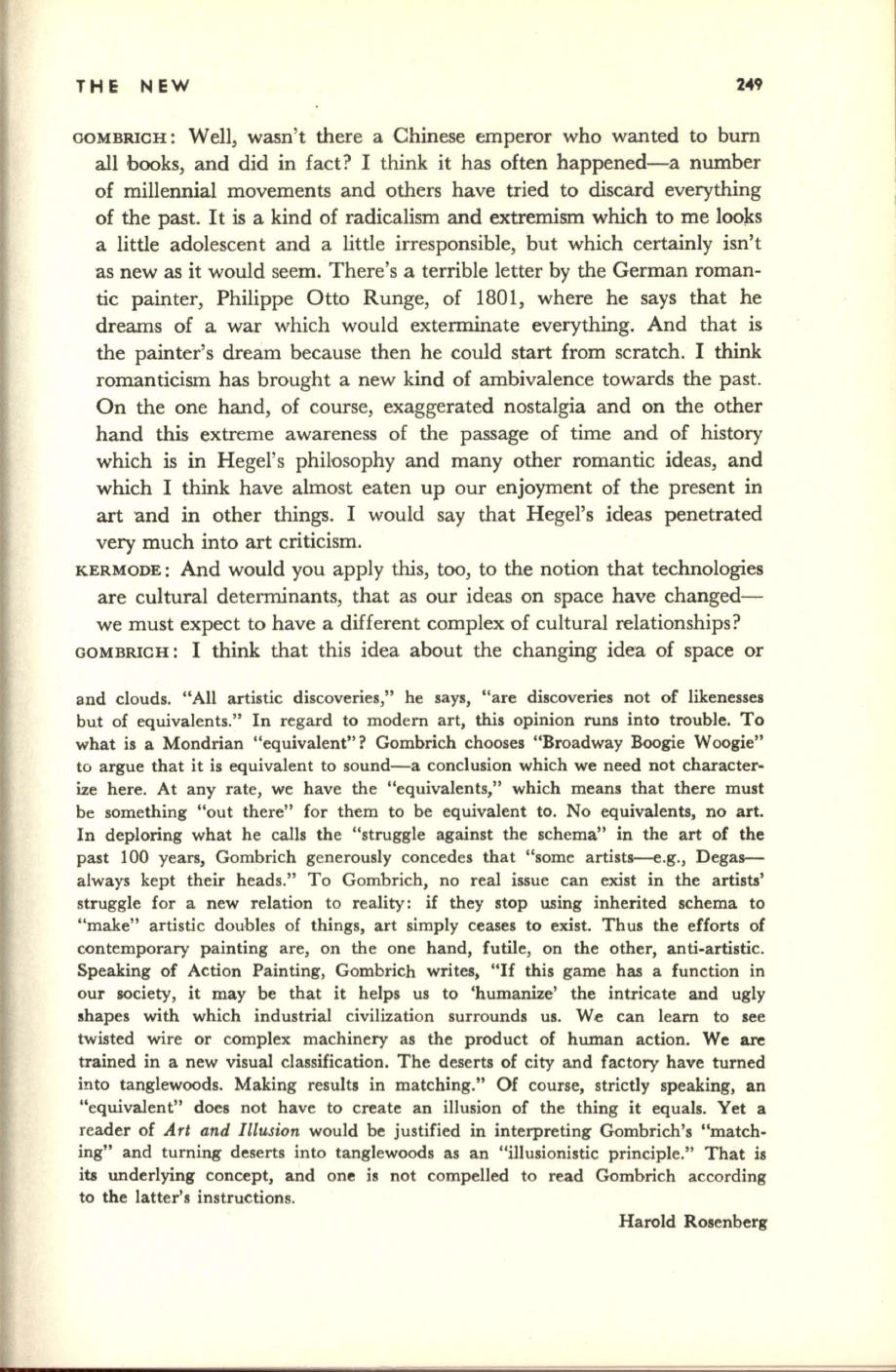
THE NEW
249
GOMBRICH :
Well, wasn't there a Chinese emperor who wanted to burn
all books, and did in fact? I think it has often happened-a number
of millennial movements and others have tried to discard everything
of the past. It
is
a kind of radicalism and extremism which to me
loo~s
a little adolescent and a little irresponsible, but which certainly isn't
as new as it would seem. There's a terrible letter by the German roman–
tic painter, Philippe Otto Runge, of 1801, where he says that he
dreams of a war which would exterminate everything. And that is
the painter's dream because then he could start from scratch. I think
romanticism has brought a new kind of ambivalence towards the past.
On the one hand, of course, exaggerated nostalgia and on the other
hand this extreme awareness of the passage of time and of history
which is in Hegel's philosophy and many other romantic ideas, and
which I think have almost eaten up our enjoyment of the present in
art
and in other things. I would say that Hegel's ideas penetrated
very much into art criticism.
KERMODE:
And would you apply this, too, to the notion that technologies
are cultural determinants, that as our ideas on space have changed–
we must expect to have a different complex of cultural relationships?
GOMBRICH:
I think that this idea about the changing idea of space or
and clouds. "All artistic discoveries," he says, "are discoveries not of likenesses
bu.t of equivalents." In regard to modern art, this opinion runs into trouble. To
what is a Mondrian "equivalent"? Gombrich chooses "Broadway Boogie Woogie"
to argue that it is equivalent to sound-a conclusion which we need not character–
ize here. At any rate, we have the "equivalents," which means that there must
be something "out there" for them to be equivalent to. No equivalents, no art.
In deploring what he calls the "struggle against the schema" in the art of the
past 100 years, Gombrich generously concedes that "some artists-e.g., Degas-–
always kept their heads." To Gombrich, no real issue can exist in the artists'
struggle for a new relation to reality: if they stop using inherited schema to
"make" artistic doubles of things, art simply ceases to exist. Thus the efforts of
contemporary painting are, on the one hand, futile, on the other, anti-artistic.
Speaking of Action Painting, Gombrich writes,
"If
this game has a function in
our society, it may be that it helps us to 'humanize' the intricate and ugly
shapes with which industrial civilization surrou.nds us. We can learn to see
twisted wire or complex machinery as the product of human action. We are
trained in a new visual classification. The deserts of city and factory have turned
into tanglewoods. Making results in matching." Of course, strictly speaking, an
"equivalent" does not have to create an illusion of the thing
it
equals. Yet a
reader of
Art and Illusion
would be justified in interpreting Gombrich's "match–
ing" and turning deserts into tanglewoods as an "illusionistic principle." That is
its underlying concept, and one is not compelled to read Gombrich according
to the latter's instructions.
Harold Rosenberg


